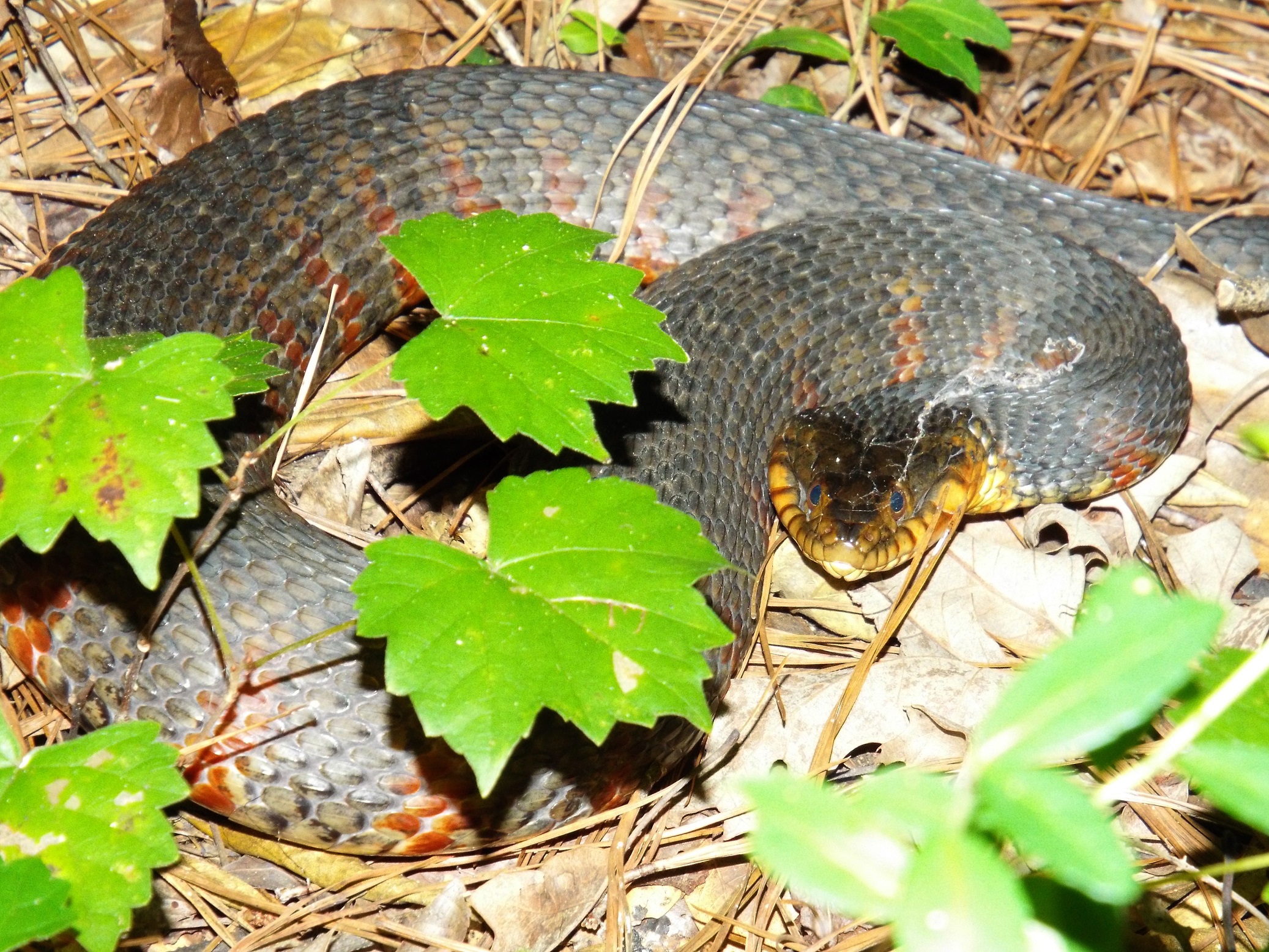
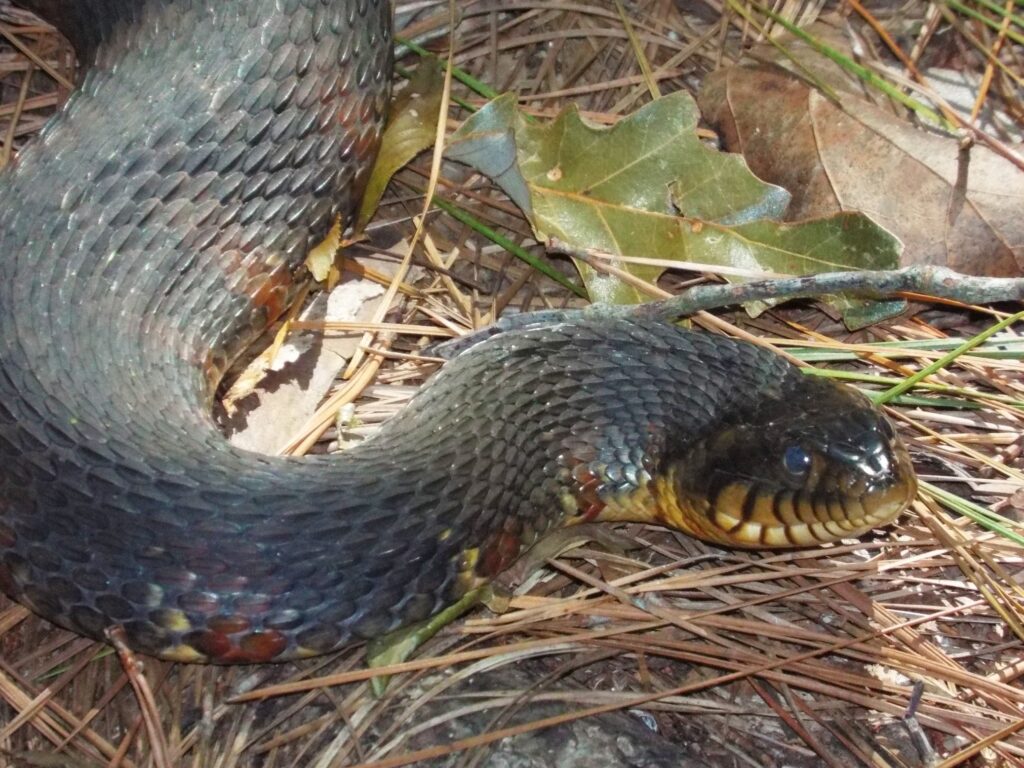
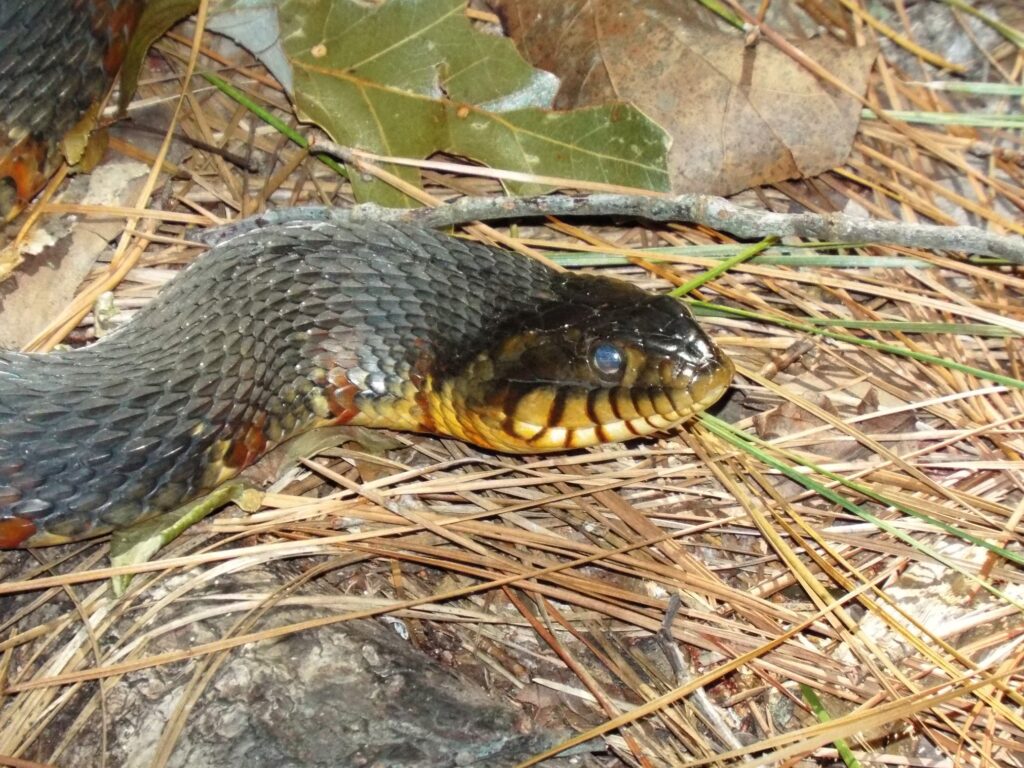
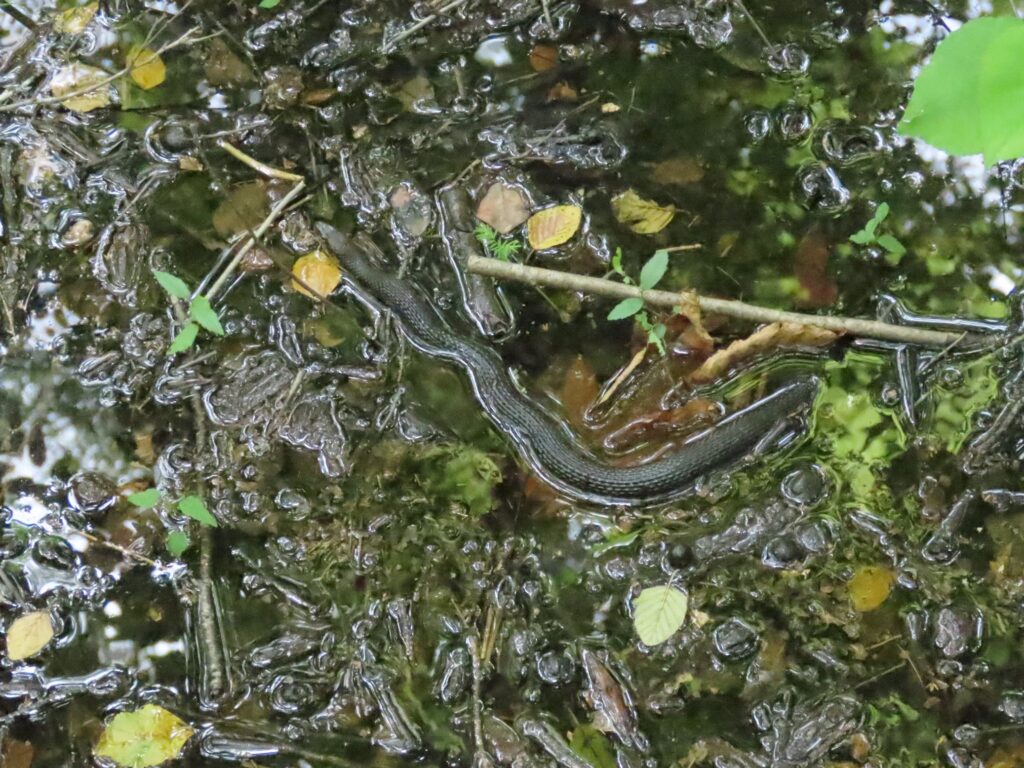
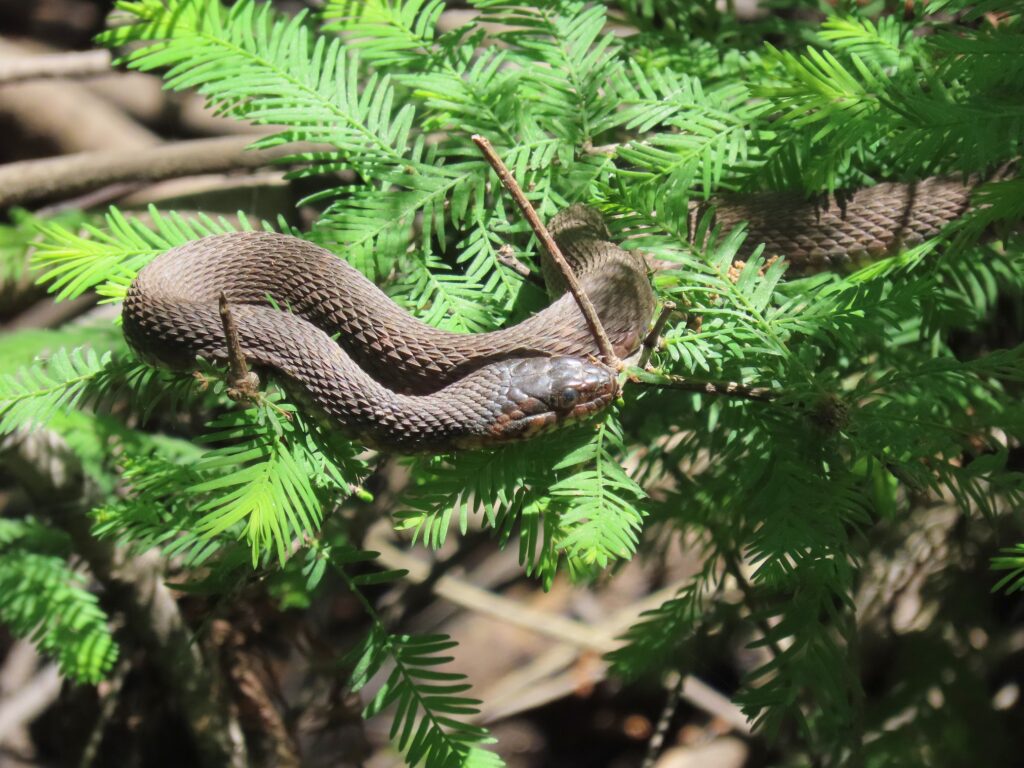
This week for Flora and Fauna Friday we’ve stumbled upon the mock moccasin, the Banded Watersnake (Nerodia fasciata).
Watersnakes, as the name implies, are a genus of aquatic snakes that spend their days in the swamps, rivers, ponds, and bays of the Carolinas hunting fish, frogs, salamanders, and aquatic invertebrates. During the day they can most easily be found sunning or lounging on stumps, fallen logs, shrubs, culverts, rocks, and banks in or along wetlands. Often they are more active at night, hunting croaking frogs and sluggish fish under the cover of darkness. Once supper is caught, Watersnakes swallow their prey whole and alive without venom or constriction.
Although the Banded Watersnake is my focus for today, I’d like cover our other Watersnakes in brief detail. Here in South Carolina we have five species of Watersnake: the Banded Watersnake (Nerodia fasciata), Plain-bellied Watersnake (N. erythrogaster), Green Watersnake (N. floridana), Brown Watersnake (N. taxispilota), and Northern Watersnake (N. sipedon).
The Northern Watersnake is restricted to the upstate here in South Carolina, where they live in a wide array of aquatic habitats, particularly streams, rivers, lakes, and ponds. They grow to about three feet in length and have a body patterned with a checkerboard of alternating brick-red squares over a base of coppery bronze. Their diet consists of a diverse array of amphibians and small fish.
The Brown Watersnake is found throughout the coastal plain of South Carolina and is specialized to a life living in major rivers, as well as the reservoirs, streams, swamps, and oxbows along their courses. They often reach four feet in length and their body is checkerboard patterned, with dark walnut-brown blocks atop a base of neutral-brown. They are strong swimmers and piscivorous, specializing on a diet of fish, with a strong preference for catfish.
The Green Watersnake has the narrowest range in the state out of our five Watersnakes, being found only in two disjunct areas: the backwaters of the central Savannah River and the swamps of the lower coastal plain from the Waccamaw to the Edisto River. They are specialized to a life patrolling still or slow moving freshwater marshes. They average three to four feet in length and have a body colored a dark olive-green with narrow zig-zags of black crossing their back. Their diet consists mainly of fish and frogs.
The Plain-bellied Watersnake is found across nearly all of South Carolina and lives in a wide array of habitats and wetland systems. They are highly mobile on the landscape and can be found more readily than other Watersnakes in ephemeral wetlands, floodplains, isolated ponds, pocosins, ditch systems, or out in the uplands trekking between wet areas. They readily grow to three feet in length and are distinctly colored, with a dark ruddy-brown back and a belly as orange as Carolina clay. Their diet is skewed more towards frogs than fish, on account of them often hunting in fish-free ephemeral and isolated wetlands.
The Banded Watersnake, our focus for today, resides throughout the coastal plain of South Carolina. They can be found in practically every freshwater wetland system in the Lowcountry, from major rivers and lakes, to expansive blackwater swamps, to ephemeral pools and suburban drainage ditches. They are our most abundant Watersnake here on the Sea Islands. Being as widespread as they are, the Banded Watersnake’s diet is equally diverse but, like our other Watersnakes, consists primarily of frogs and fish. They generally grow about two-and-a-half feet long and can be quite varied in coloration and patterning. Often, they have a reddish-brown body ringed in bands of ebony black. With age and size, these bands often blur together turning the snake nearly black across the back.
All our Watersnakes are non-venomous and no threat to man nor pet. However, they often have a short temper and a bad attitude that has not helped them escape undue persecution. Watersnakes mimic the venomous Cottonmouth (Agkistrodon piscivorus) when threatened. They flatten their heads into a broad triangle to resemble a Viper and coil their bodies into a threatening posture. Their keeled scales, a trait they share with our Vipers, help them complete their menacing look. Yet, if you look closely, they lack the vertical “cat’s eye” pupils of a Viper. If approached or touched Watersnakes generally bite without hesitation. This is all just a bluff to convince you to let them be. The Banded Watersnake is a particularly good mimic as it is the same size, body shape, and a similar color and pattern to the Cottonmouth, with which it overlaps in range and habitat. Sadly its success as a mimic leads to a lot of Banded Watersnakes being mistaken for Cottonmouths, and then pointlessly killed by people every year.
As I’ve said before, and will say again, snakes aren’t out cruising around looking for people to bite. Just think about it for a second. Even our largest snakes here in South Carolina can’t eat anything bigger than a squirrel. Why would they risk life and limb (well maybe not limb) harassing humans and dogs? The vast majority of our snakes are nonvenomous and so the vast majority of snakes killed each year are harmless. Even with the Vipers, most snake envenomations are caused by people trying to pick-up, move, or kill a venomous snake. A snake’s primary defense is camouflage; they freeze and pray you don’t see them. If you spot them, the jig is up and they will attempt to flee into cover. But if escape isn’t possible and or they are cornered or grabbed, biting is the only chance they have to save their scaly hide. A snake doesn’t know your intentions, and every day in nature is filled with life or death dilemmas for wildlife. All the snake knows in this situation is that it may only have seconds left to live. Can you really condemn a creature for just wanting to stay alive? Spare it the spade! If you find a snake in the wild, leave it be. Appreciate it, photograph it, but let coiled snakes lie.